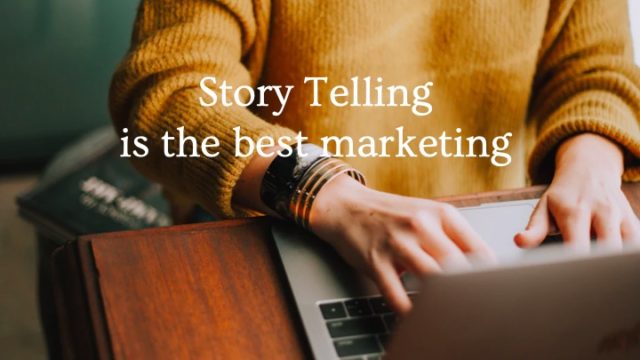3 PILLARS OF STORY TELLING IN BUSINESS
And why you should wait before asking ChatGPT to write a story or create a campaign

Advertising is boring. We’re bombarded by banners, pop-ups, and messages of all kinds, making it increasingly difficult for a new product, service, or innovative project to stand out and attract attention. More importantly, it needs to stick in the minds of consumers, stakeholders, or investors. Several studies highlight the power of stories. The Stanford Graduate School of Business, for example, reports that stories are up to 22 times more memorable than facts. From a neurological perspective, story telling plays a crucial role in our evolution and social behaviors. So, if story telling is the best tool to transfer messages, influence behaviors, and drive people to change their ideas and actions, what is the best story to tell? And how do you create it?
Unfortunately, the answer isn’t simply “ask ChatGPT.” Why? Because it lacks the foundational elements necessary to build a compelling story structure. We can ask it to improve a story or provide messages for a campaign, but only after we’ve determined some key aspects specific to our situation.
First Pillar: The Mission – The Problem or “The Conflict”
To develop a story, we must first decide on the main message we want to communicate, or more precisely, the transformation we want to provoke in our audience. In business, this is closely tied to the problem we aim to solve, which is clarified in our mission. For example, if our mission is to innovate production to improve sustainability, our stories will focus on how to use products with a new sensibility to reduce our environmental impact, rather than on the product itself. An example of this type of communication is the brand Pangaia, which has centered its communication on inspiring and accelerating an Earth-positive future.

Alternatively, if our core business involves an innovation that changes working routines, our message will be about empowering people in their work, making their tasks easier, and ultimately helping them feel more relaxed or empowered. An example of this type is Monday.com, with its story telling centered around “a new way to work.”

Aristotle said: “Without conflict, there is no action.”
Second Pillar: The Character
A common mistake companies make is thinking they are the main protagonist of the story. This is false. The main character in business story telling is always the customer, who is linked to the company because they share the same values. These values are the traits of the character and create a resonance with the audience: people can identify with the character and feel as if they are in their shoes. In the advertising campaign for Chanel Chance by Jean-Paul Goude (2019), for example, the story revolves around an audition that four girls (the main characters) face with a “lighthearted, bright, and joyful spirit” because Chance is a state of mind, an attitude.
Another example is Google’s 2017 campaign “Year in Search,” a two-minute video showing the queries people asked and how Google provided a myriad of answers, strengthening the relationship between Google and its users. This format was repeated in subsequent years.
To decide the main character of our business story, the question is: who is our ideal buyer persona? What are their interests, values, aspirations, or habits? Answering these questions requires going beyond the classic basic client profile.
If the company isn’t the main character of the story, what is its role? Usually, it helps the protagonist achieve their goal or undergo a change. Drawing a parallel to fairy tales, in Cinderella, for example, our client is Cinderella, and we are the fairy godmother.
Third Pillar: Style and Tone of Voice
The style of the story and the Tone of Voice, must be consistent with the rest of the brand’s communication. Business story telling can be joyful, colorful, and aesthetic, as in the previous example of Chanel Chance, because it resonates with the audience and aligns with the values. Alternatively, it can be more inspiring like Pangaia or more serious and formal, as seen in many advertising and corporate formats in professional services, such as finance or legal sectors. Sometimes, the story telling can be disruptive, breaking the norms.
For example, Klarna, a startup that became a unicorn in the online payment field, employs a communication style reminiscent of the fashion or music sectors, using colors like shocking pink and violet, fashion-forward outfits, and urban settings. Their story, “Make Shopping Smooth,” is based on their personality of “Curiosity bold” and resonates with their audience’s aspirations and lifestyle.

So, what is your communication tone of voice and your brand personality’s features? This is one of the aspects that make communication unique.
Designing an original and effective story isn’t easy. There are several features to consider and manage to create a story that stands out. However, starting from our mission, focusing on our client, and using our unique style to communicate will help us avoid common mistakes and be more creative.
Published on Medium.com







